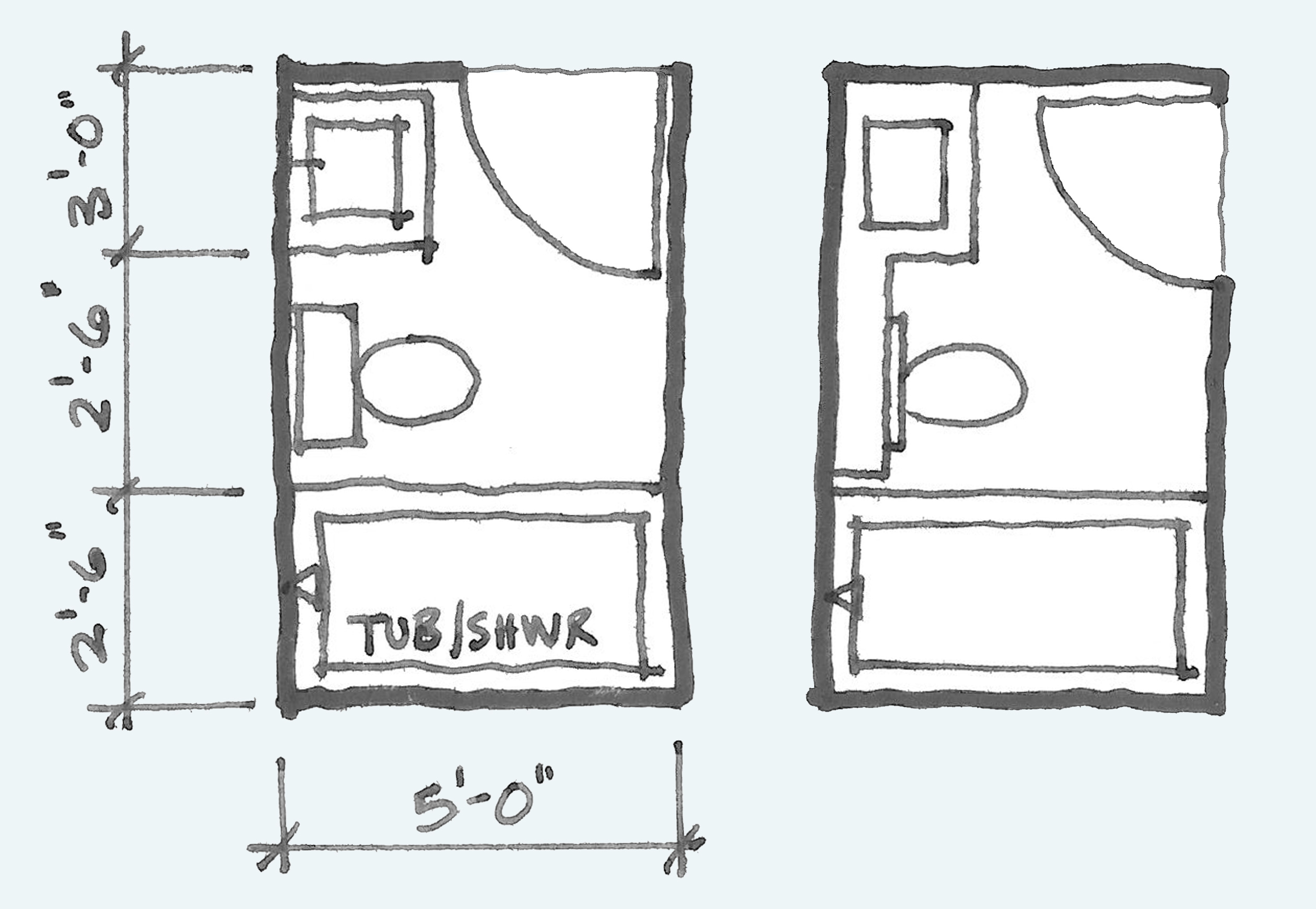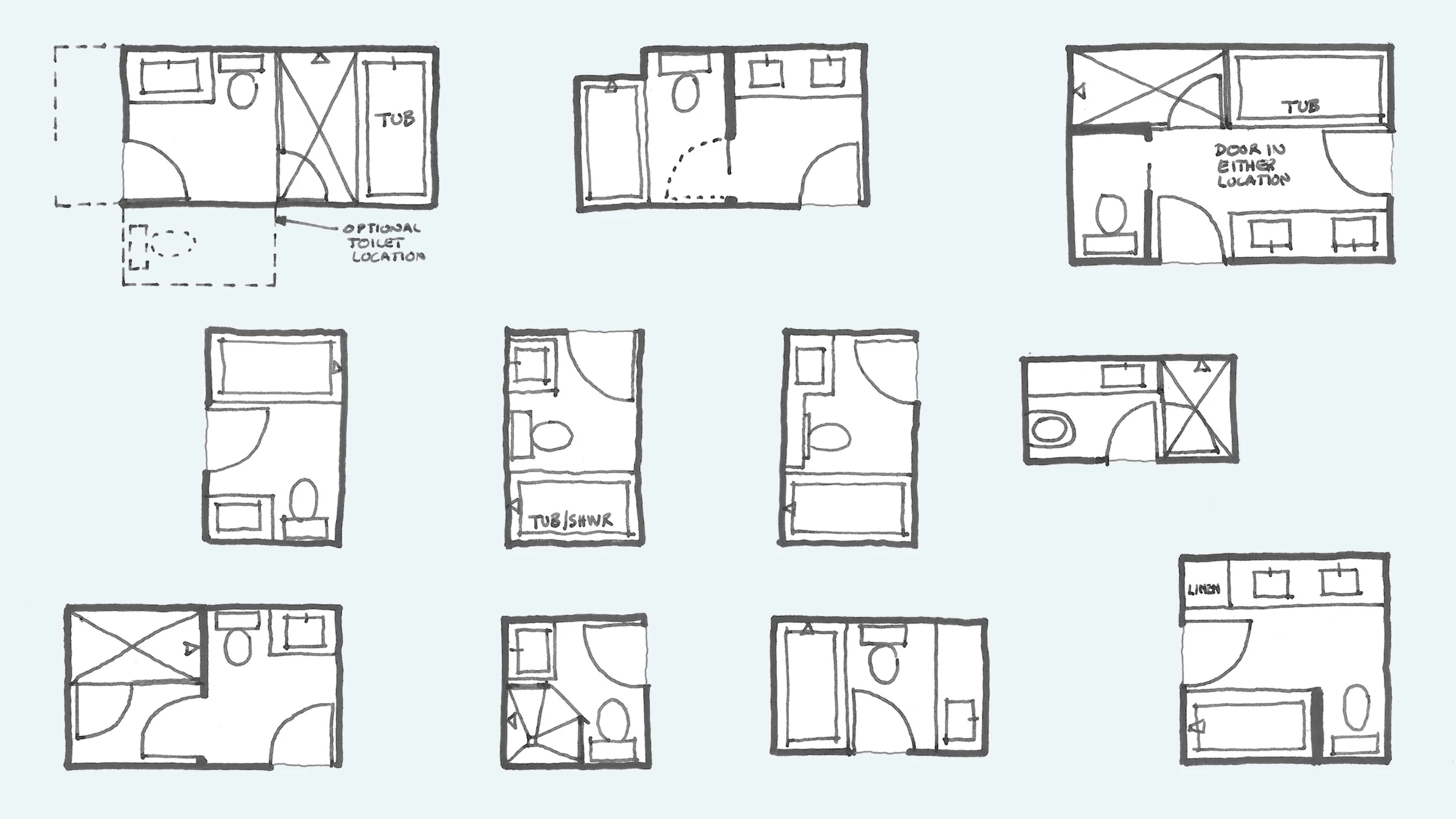Designing the Mudroom Bathroom

A mudroom bathroom is a practical and stylish addition to any home, offering a dedicated space for both cleaning up after outdoor activities and taking care of personal hygiene. This combination of functionality and convenience makes it a highly desirable feature, especially for families with active lifestyles.
Benefits of a Mudroom Bathroom
A mudroom bathroom provides a number of advantages that enhance the functionality and comfort of a home.
- Convenience: A mudroom bathroom eliminates the need to trek through the house to reach the main bathroom after a messy outdoor adventure. It allows for quick and easy clean-ups, keeping dirt and grime confined to a specific area.
- Functionality: This dedicated space serves as a central hub for managing outdoor gear and personal hygiene. It offers a convenient spot to store shoes, coats, and other outdoor essentials, while also providing a private space for showering or using the toilet.
- Organization: A mudroom bathroom can be designed to maximize storage and organization, keeping everything in its place. This helps maintain a clean and tidy mudroom area, preventing clutter and promoting a sense of order.
- Aesthetics: A well-designed mudroom bathroom can enhance the overall aesthetic appeal of a home. It can be a stylish and functional space that complements the existing décor and adds a touch of sophistication to the mudroom area.
Design Considerations for a Mudroom Bathroom
Creating a functional and stylish mudroom bathroom requires careful planning and consideration of various design elements.
- Space Constraints: The available space will dictate the layout and size of the bathroom. It is important to utilize the space efficiently, incorporating compact fixtures and maximizing storage solutions to avoid overcrowding.
- Traffic Flow: The layout should allow for easy movement within the space, ensuring smooth transitions between different areas of the mudroom. Consider the flow of traffic, especially during peak times, to avoid congestion and bottlenecks.
- Lighting: Adequate lighting is essential for a functional and safe mudroom bathroom. Natural light is ideal, but if limited, consider installing multiple light sources, such as overhead fixtures, under-cabinet lights, and vanity mirrors with integrated lighting.
- Ventilation: Proper ventilation is crucial to prevent moisture buildup and maintain a healthy environment. Install an exhaust fan to remove steam and odors, ensuring adequate airflow and preventing mold growth.
- Storage Needs: Determine the storage requirements based on the household’s needs and the types of items that will be stored in the mudroom bathroom. Incorporate a variety of storage solutions, such as cabinets, shelves, hooks, and baskets, to keep everything organized and accessible.
Choosing the Right Materials
Selecting appropriate materials for a mudroom bathroom is essential to ensure durability, moisture resistance, and ease of cleaning.
- Durability: Materials should be able to withstand heavy use and resist scratches, dents, and stains. Choose materials that are known for their durability, such as ceramic tile, porcelain, or natural stone for flooring, and waterproof paint or laminate for walls.
- Moisture Resistance: The mudroom bathroom is prone to moisture, so materials should be resistant to water damage. Choose materials that are water-resistant, such as waterproof flooring, sealed grout, and moisture-resistant cabinetry.
- Ease of Cleaning: Materials should be easy to clean and maintain. Choose materials that are non-porous and resistant to stains, such as ceramic tile, porcelain, or laminate, and avoid materials that are prone to mold or mildew growth.
Common Mudroom Bathroom Fixtures and Features, Mudroom bathroom floor plans
Mudroom bathrooms typically include a range of fixtures and features that enhance their functionality and convenience.
- Sinks: A sink is essential for handwashing and cleaning up after outdoor activities. Consider a pedestal sink for a minimalist look, a vanity sink with storage for toiletries, or a utility sink for heavy-duty cleaning.
- Toilets: A toilet is a standard fixture in a mudroom bathroom, providing a convenient option for quick trips. Choose a toilet with a water-saving feature to conserve water.
- Showers: A shower is a great addition to a mudroom bathroom, allowing for a quick rinse after outdoor activities. Consider a walk-in shower for accessibility or a traditional shower stall with a showerhead.
- Storage Cabinets: Storage cabinets provide ample space for organizing toiletries, cleaning supplies, and other essential items. Choose cabinets with adjustable shelves and doors for easy access and organization.
- Laundry Hampers: A laundry hamper is a convenient feature for storing dirty clothes, especially after outdoor activities. Choose a hamper with a lid to prevent odors and a sturdy base to prevent tipping.
Floor Plan Considerations: Mudroom Bathroom Floor Plans

A well-designed mudroom bathroom floor plan is essential for creating a functional and enjoyable space. By carefully considering layout, traffic flow, and accessibility, you can maximize the utility and aesthetics of this often overlooked area.
Different Mudroom Bathroom Layouts
The layout of your mudroom bathroom will largely depend on the available space and your specific needs. Here are some common layout options:
- Open Concept: This layout integrates the mudroom and bathroom into one open space. This can be ideal for smaller homes, as it maximizes space and creates a sense of openness. However, it may require careful planning to ensure privacy and functionality.
- Separate Rooms: This layout features a dedicated mudroom area and a separate bathroom. This provides greater privacy and allows for more storage options in the mudroom. However, it requires more space and can make the bathroom feel more isolated.
- Compact Layouts: Compact mudroom bathrooms are ideal for small spaces. They often feature a combination of a small shower or tub, a toilet, and a vanity. This layout maximizes space while still providing essential bathroom amenities.
Examples of Mudroom Bathroom Floor Plans
Here are some examples of different mudroom bathroom floor plans, showcasing varying sizes and features:
- Small Mudroom Bathroom: A small mudroom bathroom might feature a compact shower, a toilet, and a small vanity with a sink. It could be 4′ x 6′ or 5′ x 7′ in size.
- Large Mudroom Bathroom: A larger mudroom bathroom could incorporate a full-size tub or shower, a separate toilet room, and a larger vanity with storage space. It might be 8′ x 10′ or 10′ x 12′ in size.
- Mudroom Bathroom with Laundry Area: This layout combines a mudroom bathroom with a laundry area. It could include a washer and dryer, a sink, and a folding counter. It might be 10′ x 12′ or 12′ x 14′ in size.
Importance of Traffic Flow and Accessibility
Traffic flow and accessibility are crucial considerations when designing a mudroom bathroom floor plan. A well-designed plan will:
- Maximize Space: By strategically placing fixtures and furniture, you can optimize the use of space, ensuring a comfortable and functional environment.
- Minimize Congestion: Avoid narrow pathways and awkward turns that can create bottlenecks and make the space feel cramped.
- Accommodate Mobility Needs: Ensure adequate space for wheelchair access, turning radius, and other mobility aids.
Design Challenges and Solutions
Common design challenges for mudroom bathroom floor plans include:
- Limited Space: Utilize space-saving fixtures, such as a corner shower or a wall-mounted toilet.
- Awkward Angles: Use custom cabinetry or creative layout solutions to maximize space and minimize wasted area.
- Ventilation Issues: Ensure adequate ventilation with a window or an exhaust fan to prevent moisture buildup and unpleasant odors.
Mudroom Bathroom Styles

Your mudroom bathroom is a space that should be both functional and stylish. There are many different design styles that can be incorporated into this unique space, allowing you to create a bathroom that reflects your personal taste and complements the overall aesthetic of your home.
Mudroom bathroom floor plans – Whether you prefer a sleek modern aesthetic, a cozy farmhouse vibe, or a classic traditional look, there’s a mudroom bathroom style that’s perfect for you. This section explores popular design styles, provides examples of their key features, and offers tips for creating a cohesive and stylish mudroom bathroom.
Popular Mudroom Bathroom Styles
Popular mudroom bathroom styles can be broadly categorized into several distinct aesthetics. Each style has its own unique characteristics, color palettes, materials, fixtures, and decor, allowing you to personalize your space to your liking. Let’s explore some of the most popular styles:
- Modern: Modern mudroom bathrooms are characterized by clean lines, minimalist designs, and a focus on functionality. They often feature sleek fixtures, neutral color palettes, and natural materials like stone and wood. Modern mudroom bathrooms are perfect for homeowners who want a space that is both stylish and practical.
- Farmhouse: Farmhouse mudroom bathrooms embrace a rustic charm and cozy atmosphere. They typically feature warm color palettes, natural materials like wood and stone, and distressed finishes. Farmhouse mudroom bathrooms often incorporate vintage elements and decorative touches like farmhouse sinks and open shelving.
- Traditional: Traditional mudroom bathrooms are characterized by classic elegance and timeless appeal. They typically feature ornate fixtures, rich color palettes, and traditional materials like marble and brass. Traditional mudroom bathrooms are perfect for homeowners who want a space that exudes sophistication and refinement.
- Minimalist: Minimalist mudroom bathrooms prioritize simplicity and functionality. They often feature clean lines, neutral color palettes, and minimal decor. Minimalist mudroom bathrooms are perfect for homeowners who want a space that is calm, serene, and uncluttered.
Mudroom Bathroom Style Features
Each mudroom bathroom style is defined by its unique features, which can be used to create a cohesive and stylish space. The following table provides a detailed breakdown of the key features associated with different mudroom bathroom styles:
| Style | Color Palette | Materials | Fixtures | Decor |
|---|---|---|---|---|
| Modern | Neutral, white, gray, black | Stone, wood, metal, glass | Sleek, minimalist | Minimalist, geometric, abstract art |
| Farmhouse | Warm, earthy tones, white, cream | Wood, stone, metal, distressed finishes | Rustic, farmhouse-style | Vintage, rustic, natural elements |
| Traditional | Rich, deep colors, jewel tones | Marble, brass, wood, fabric | Ornate, decorative | Classic, traditional, ornate |
| Minimalist | Neutral, white, gray, black | Stone, wood, metal, glass | Simple, functional | Minimal, clean lines, geometric |
Mudroom Bathroom Floor Plans
The layout of your mudroom bathroom can significantly impact the overall style and functionality of the space. Here are examples of mudroom bathroom floor plans that incorporate different design styles:
- Modern Mudroom Bathroom: A modern mudroom bathroom floor plan might feature a sleek, minimalist design with a walk-in shower, a floating vanity, and a large mirror. The space would be kept clean and uncluttered, with minimal decor.
- Farmhouse-Style Mudroom Bathroom: A farmhouse-style mudroom bathroom floor plan might incorporate a freestanding tub, a rustic vanity with open shelving, and a large window to let in natural light. The space would feature warm, earthy tones and natural materials like wood and stone.
Tips for Creating a Cohesive and Stylish Mudroom Bathroom
Creating a cohesive and stylish mudroom bathroom requires careful consideration of the design elements. Here are some tips to help you achieve a unified and aesthetically pleasing space:
- Coordinate Colors: Choose a color palette that complements the overall style of your mudroom bathroom. Use a neutral base color and add pops of color with accessories and decor.
- Select Complementary Textures: Mix and match textures to add visual interest and depth to your mudroom bathroom. For example, you could combine smooth tile with rough-hewn wood or soft towels with textured rugs.
- Choose Functional and Stylish Fixtures: Select fixtures that are both functional and aesthetically pleasing. Consider the overall style of your mudroom bathroom when choosing faucets, lighting, and hardware.
- Incorporate Personal Touches: Add personal touches to make your mudroom bathroom feel like your own. This could include artwork, plants, or decorative accents that reflect your personality and style.
